Dr Peter Kevan | Charlotte Coates – Exploring Micrometeorology in Plant Stems and Flowers
As complex living organisms, plants can often display intricate interactions with the air inside and around them. So far, however, many characteristics of these processes have gone largely unexplored. In their research, Charlotte Coates and Dr Peter Kevan at the University of Guelph combine field surveys with advanced imaging technologies to study the ‘micrometeorology’ that takes place in and around the stems and flowers of many plants. Their discoveries are shedding new light on how these plants grow and reproduce, and how some species are providing ideal habitats for ecologically damaging insects.
Micrometeorology
When we think about meteorology, we typically envisage weather patterns spanning vast regions of Earth’s atmosphere: governed by factors including air temperatures, pressures, and moisture. However, these same effects are also highly relevant on far smaller scales, and can be studied through the field of ‘micrometeorology’. Although the impacts of individual processes are minuscule compared with those in conventional meteorology, their combined effects can be crucial in understanding larger-scale processes.
One branch of micrometeorology considers the interaction between air and plants, with features including flowers, leaves, and stems. Because of their intricate, often complex living structures, heat can accumulate within and surround them in a unique variety of ways, introducing complex patterns in the flow of heat. Understanding these behaviours is key to studying how plants grow, feed, reproduce, and respond to changes in their surrounding environments – among a variety of other factors. Until recently, however, this level of knowledge remained sparse.
A Gap in Knowledge
Despite the many advantages of studying the micrometeorology of plants, there are still many aspects of the field that have gone largely unexplored in previous studies. According to Charlotte Coates and Dr Peter Kevan at the University of Guelph in Canada, three of these aspects are particularly important.
Firstly, there is little current knowledge about the heating mechanisms that play out within hollow flowers and stems. These structures contain tiny pockets of air that have been found to behave very differently to the air surrounding them – and are therefore likely to have a strong influence over how plants function.
Secondly, few studies have explored the impact of micrometeorology on plant reproduction. Since many plants grow and thrive in cold environments, they must have evolved advanced solutions to trigger their fertilisation mechanisms – yet these are currently unknown.
Finally, studies into the roles of these air spaces in providing habitats for smaller organisms, particularly insects, are currently sparse. Since insect damage to many important plant species is growing worldwide, this is a particularly pressing issue. Dr Kevan, Coates, and their colleagues have developed new ways to study these delicate environments.
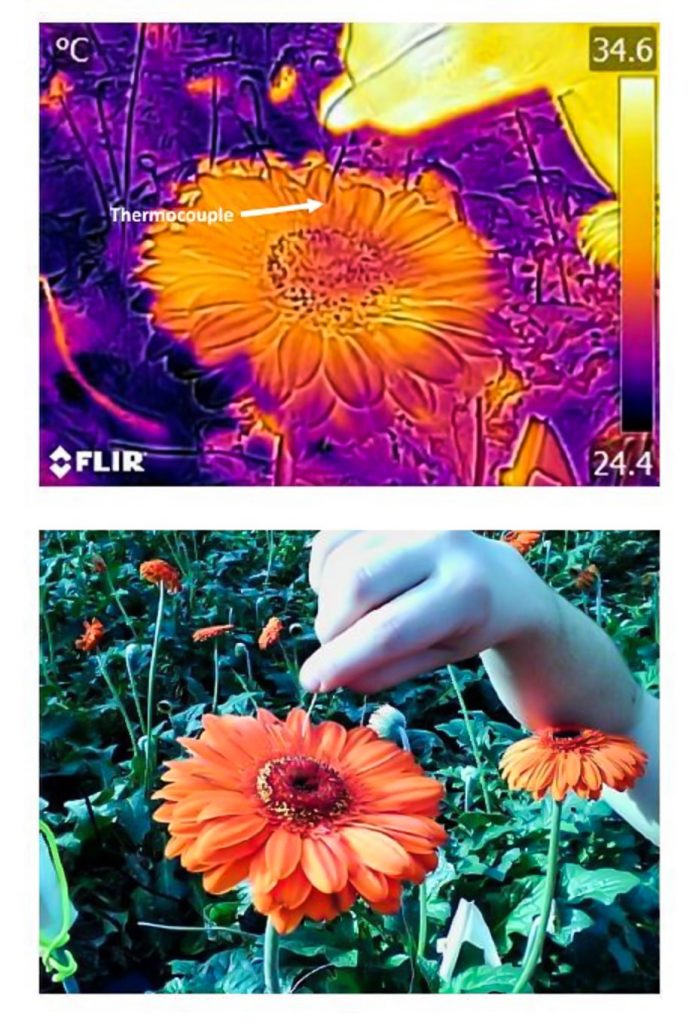
Developing Imaging Tools
Plant micrometeorology is affected by many different physical properties: including the rates at which plant tissues reflect and absorb sunlight, conduct heat, and change colour. Important information about each of these properties can be gleaned by measuring the surface temperatures of plants, via the varying levels of infrared radiation they emit. Previously, this has been done using cooled thermal cameras that minimise distortions in their images, enabling researchers to study the surface temperatures of individual parts of plants. However, this equipment is bulky and expensive, making it less practical for field research.
Through their research, Coates, Dr Kevan, and their colleagues have developed methods to decrease the error associated with an uncooled thermal camera, which operates at similar temperatures to its surroundings. Instead of a costly cooling system, their approach involves calibrating the uncooled camera at the experiment site to correct the distorted infrared frequencies it detects, allowing them to reproduce reliable images.
By setting up these cameras next to plants, and combining them with extremely precise thermometer readings taken at the time of imaging, the researchers can collect highly accurate data on plant surface temperatures. This technology has now opened up new opportunities to study three the unexplored aspects of plant micrometeorology, which Coates, Dr Kevan and their colleagues first identified.
Greenhouse Effects in Hollow Stems
Hollow stems are important structures in many plants. With mechanical properties comparable to the sturdy poles used in scaffolding, they can be crucial in preventing plants from bending and buckling under their own weight. Yet the air and light contained inside these structures can also display interesting physical properties: as small columns of fluid separated from the surrounding atmosphere, their behaviours are governed by their own unique heating mechanisms. As Coates and Dr Kevan point out, these have been widely overlooked in previous research.
Through a study published in 2018, a team led by Dr Kevan presented new ideas about the processes involved in this heating, and how they interact in complex ways to produce a greenhouse effect – elevating temperatures within hollow stems. The researchers laid out their ideas through a new model, which accounted for the combined influences of surrounding ambient air, radiation from the sun, and a wide variety of both optical and structural properties of the stems. Ultimately, their model shows how each of these effects can both contribute to and be influenced by such a micrometeorological greenhouse effect.
In addition to studying the microgreenhouse effect in relation to heat transfer, the light environment within plants is also important to consider. This is because photosynthesis is dependent on the light environment within plant tissue, rather than outside the tissue. Therefore, the team is also investigating which frequencies of light are present within various hollow-stemmed species, to contribute to our understanding of the microgreenhouse effect. Some of the main species that they study are pumpkins and squash, gerbera daisies, amaryllis and other horticulturally important plants. With contributions from colleagues around the globe, the team’s research is helping to create a catalogue of hollow-stemmed plants and their distributions.
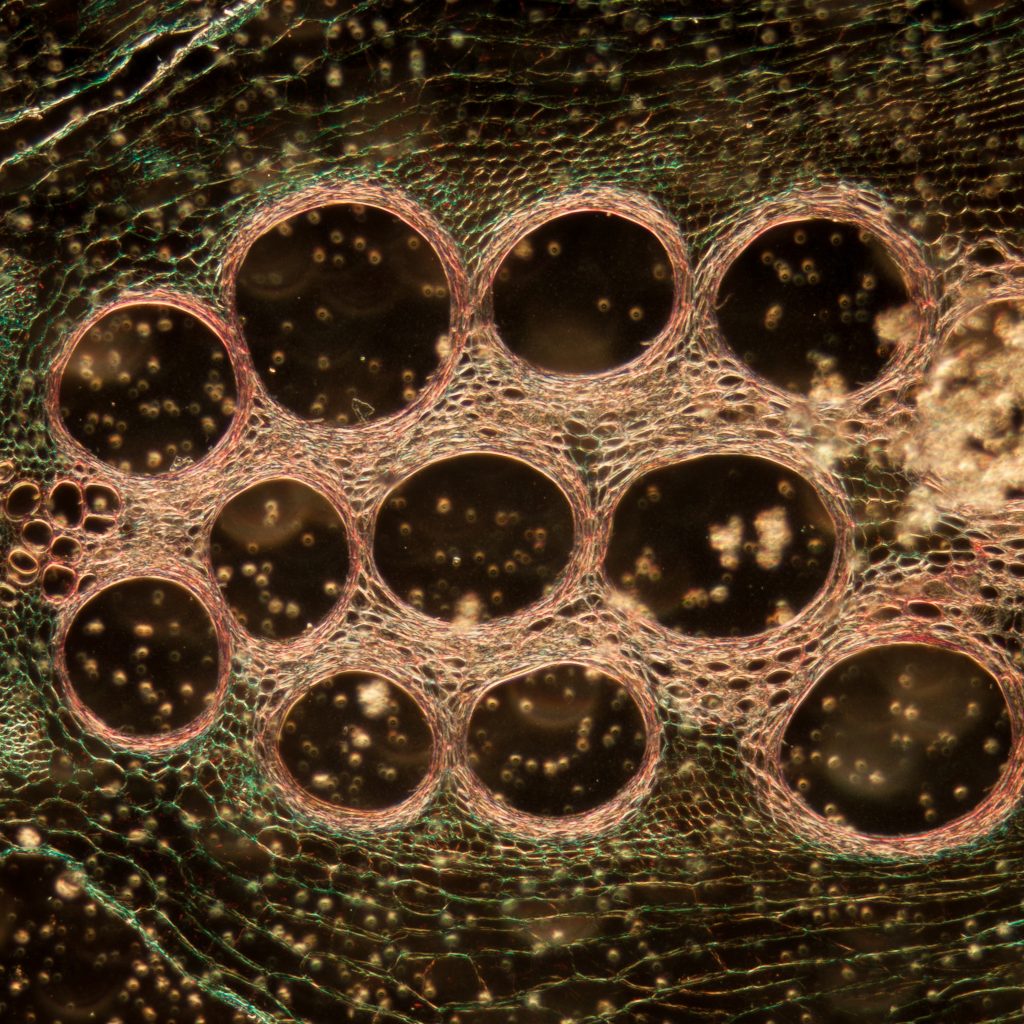
Accumulating Heat in Arctic Flowers
Flowers are another type of structure where small-scale heating can be highly relevant. Like satellite dishes, cup-shaped flowers can focus incident sunlight onto small, concentrated volumes of air, inducing substantial heating.
Through a 2020 study, Dr Kevan assessed how this heating occurred in four common flower species found in the Arctic. In such harsh climates, the ways in which plants grow, feed, reproduce, and interact with herbivores are all strongly influenced by ground temperatures – which remain below freezing for much of the year. Yet in turn, flowers can also influence these temperatures themselves, substantially altering their wider ecosystems.
In his study, Dr Kevan took field surveys of these flowers at three locations in the high Canadian Arctic. His observations revealed that in direct sunlight, air close to ground level could be warmed by up to 6°C when these species were present – clear evidence of another type of microgreenhouse effect. Compared with bare patches of ground, this increased the number of days with above-freezing temperatures at ground level by up to 25%, prolonging the growing season for all plant species surrounding the flowers. As a result, Dr Kevan concluded that these mechanisms are crucial to the survival of many Arctic plants.
Roles in Arctic Plant Reproduction
Coates, Dr Kevan and their colleagues now propose that the passive solar warming effects of stems and flowers together play an important role in plant reproduction. This is particularly true in colder climates, where mechanisms like seed production and fertilisation can only be triggered above certain temperatures. In a 2019 study, Dr Kevan’s team assessed how this occurred in another group of flowers. This time, they travelled to the Magadan region in the far north-east of Siberia – an area known for some of the harshest winter temperatures in the northern hemisphere.
Through a field survey, the team investigated the shapes of the flowers and stems of four common plant species in the region. They discovered that hollow stems were over four times more common than solid stems: in contrast, both types are roughly equally as common in most other parts of the world. As a result, the air within the flowers and stems of these plants was generally warmed by between 1 and 6°C compared with their surroundings – and even as much as 10°C in some cases.
In the springtime, where temperatures could still drop to well below freezing, these mechanisms enabled the plants to initiate a wide variety of reproduction mechanisms, ensuring their continued survival.
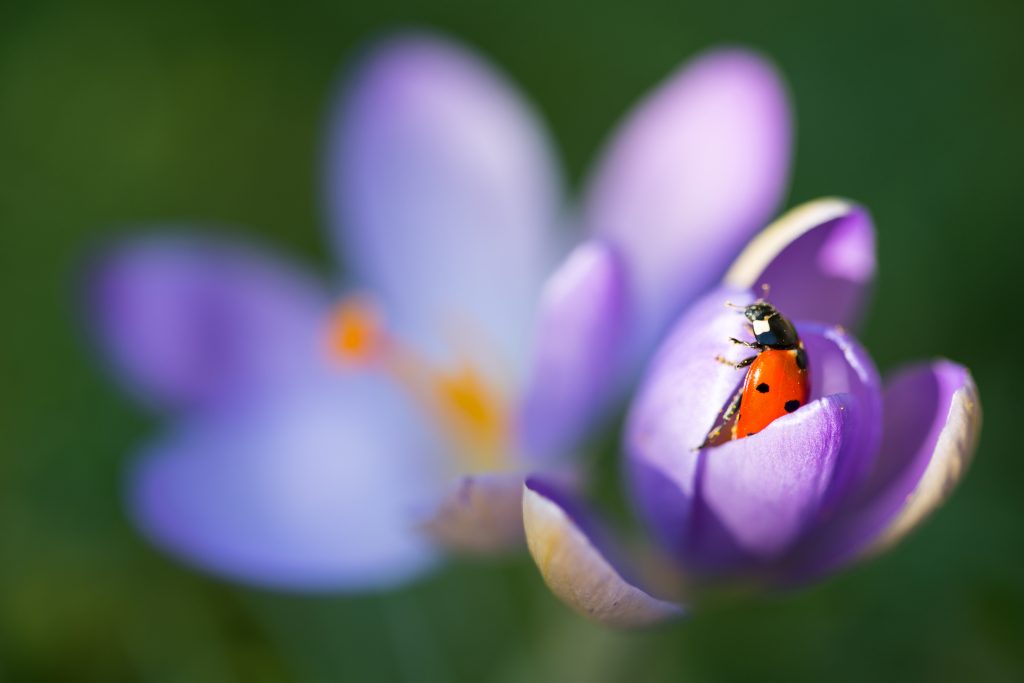
Providing Habitats for Insects
The mechanisms studied by the team so far may serve the interests of individual plants and the species surrounding them. However, in their latest research, Coates, Dr Kevan, and their colleagues also shed new light on the roles they play in their wider ecosystems. Since many stems and flowers are large enough for insects to crawl inside, they can provide warm, safe environments for them to feed, grow, and reproduce. These microgreenhouse environments are particularly desirable if conditions outside are more extreme.
Through observations taken in a 2020 study, the researchers assessed how several different insect species, from groups including beetles, moths, and sawflies, benefit from the elevated temperatures within flowers and stems. In addition, they showed how they can cause damage to plant tissues through activities like leaf mining, and producing swelling outgrowths named ‘galls’. These insights could enable biologists to better understand the environmental roles of plants and insects, and to better assess insect damage in both agricultural crops and ecologically important plants.
Assessing Future Changes
As climate change now threatens to transform the weather patterns experienced by ecosystems worldwide, the research of Dr Kevan, Coates, and their colleagues comes at a critical time. In the coming decades, nowhere on Earth is projected to transform more drastically than the Arctic, where the growth and reproduction of plants, as well as their roles in their wider ecosystems, are intricately connected with their micrometeorology. Therefore, any disruption to typical weather patterns could threaten their survival, as well as the many animals which depend on them.
Elsewhere, climate change is having an increasing impact on insect damage – with warmer temperatures providing better conditions for harmful pests to grow and reproduce. Through a deeper understanding of the many intricate interactions involved in plant micrometeorology and the microgreenhouse effect, they will be able to understand these consequences in more detail. In turn, they could become better equipped to understand how both ecosystems and agriculture can be protected against the coming changes.
Reference
https://doi.org/10.33548/SCIENTIA666
Meet the researchers

Dr Peter Kevan
School of Environmental Sciences
University of Guelph
Guelph
Canada
Dr Kevan completed his PhD in Entomology at the University of Alberta in 1970. He became an Assistant Professor at the University of Colorado in 1975, where he worked at the Institute of Arctic and Alpine research until 1983. He joined the University of Guelph in 1982, where he now University Professor Emeritus at the School of Environmental Sciences. Dr Kevan has received numerous awards for his decades of important research, including the Gold Medal of the Entomological Society of Canada in 2005. He is also a Fellow of the Royal Society of Canada. His widely varied research interests include pollination biology, the conservation of beneficial insects, insect thermoregulation, and arctic to tropical ecology.
CONTACT
E: pkevan@uoguelph.ca
W: https://ses.uoguelph.ca/people/peter-kevan

Charlotte Coates
School of Environmental Sciences
University of Guelph
Guelph
Canada
Charlotte Coates is a Masters’ student at University of Guelph’s School of Environmental Sciences, where she will graduate in 2022. She currently works as a Research Assistant in Dr Kevan’s lab, where she has contributed to projects including research into plant temperature regimes; training research assistants in plant surveying; and executing pest management experiments. Coates has earned a number of awards for her work so far, including the MacSon Entrance Graduate Scholarship at Ontario Agricultural College – which she received for her promising research potential in the field of conservation.
CONTACT
E: coatesc@uoguelph.ca
W: https://www.researchgate.net/profile/Charlotte-Coates-3
FUNDING
This project is part of the Accelerating Green Plant Innovation for Environmental and Economic Benefit Cluster and is funded by the Canadian Ornamental Horticulture Alliance (COHA-ACHO) and by the Government of Canada under the Canadian Agricultural Partnership’s AgriScience Program.
The researchers also acknowledge support from the Natural Sciences and Engineering Research Council of Canada (Individual Discovery Grant No. RGPIN-2018- 04820 to PK).
FURTHER READING
RA Byerlay, C Coates, AA Aliabadi, PG Kevan, In situ calibration of an uncooled thermal camera for the accurate quantification of flower and stem surface temperatures, Thermochimica Acta, 2020, 693, 178779.
PG Kevan, C Coates, PN Silva, M Larson, Warm & Comfortable within Hollow Stems, Leaf-mines and Galls: Little known habitats for Entomologists & Botanists to explore, Newsletter of the Biological Survey of Canada, 2020, 39, 11.
PG Kevan, Heat accumulation in hollow Arctic flowers: possible microgreenhouse effects in syncalyces of campions (Silene spp.(Caryophyllaceae)) and zygomorphic sympetalous corollas of louseworts (Pedicularis spp.(Orobanchaceae)), Polar Biology, 2020, 43, 2101.
CJ van der Kooi, PG Kevan, MH Koski, The thermal ecology of flowers, Annals of Botany, 2019, 124, 343.
PG Kevan, EA Tikhmenev, P Nunes-Silva, Temperatures within flowers and stems: possible roles in plant reproduction in the north, Bulletin of the NorthEastern Science Centre of the Russian Academy of Sciences, Magadan, Russia, 2019, 1, 38.
PG Kevan, P Nunes-Silva, R Sudarsan, Short communication: thermal regimes in hollow stems of herbaceous plants—concepts and models, International Journal of Biometeorology, 2018, 62, 2057.

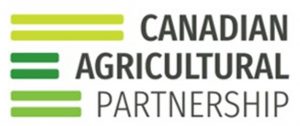
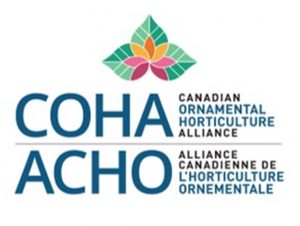

Want to republish our articles?
We encourage all formats of sharing and republishing of our articles. Whether you want to host on your website, publication or blog, we welcome this. Find out more
Creative Commons Licence
(CC BY 4.0)
This work is licensed under a Creative Commons Attribution 4.0 International License. 
What does this mean?
Share: You can copy and redistribute the material in any medium or format
Adapt: You can change, and build upon the material for any purpose, even commercially.
Credit: You must give appropriate credit, provide a link to the license, and indicate if changes were made.
More articles you may like
Grandmothers: Innovation Through Tradition
Grandmother Project – Change through Culture (GMP) is an organisation dedicated to documenting the role of grandmothers and demonstrating the effectiveness of grandmother-inclusive strategies in improving the health and well-being of women, children, and adolescents. GMP’s groundbreaking work challenges conventional wisdom to transform community-based interventions in Africa and beyond, harnessing a powerful but often overlooked resource: the wisdom and influence of grandmothers.
Dr Robert Larkin | Cultivating Change to Improve Soil Health and Increase Potato Yield
Environmental quality and food production are facing the pressing challenges of climate change and global population growth. Dr Robert Larkin from the United States Department of Agriculture-Agricultural Research Service (USDA-ARS) and a team of plant scientists developed and tested a range of crop management systems to help overcome these compounding challenges. Their work is improving soil health and increasing the yield of potato crops, contributing to the future food security of nations.
Professor Giorgio Buttazzo | Artificial Intelligence and a Crossroads for Humanity
Where do we stand with artificial intelligence? Might machines take over our jobs? Can machines become conscious? Might we be harmed by robots? What is the future of humanity? Professor Giorgio Buttazzo of Scuola Superiore Sant’Anna is an expert in artificial intelligence and neural networks. In a recent publication, he provides considered insights into some of the most pressing questions surrounding artificial intelligence and humanity.
Dr Ralf Adam | New Technologies Shaping the Future of Oral Hygiene
Understanding the efficiency of various toothbrush technologies is essential for achieving optimal oral health. Dr Ralf Adam, who leads a dedicated team at Procter & Gamble in Germany, is keen to investigate the complexities of these technologies. His team have provided new insights into the best toothbrush types for plaque removal and the maintenance of gum health. By highlighting the importance of informed oral care decisions and ongoing investigations, this vital research works towards ensuring everyone can achieve a brighter, healthier smile.




